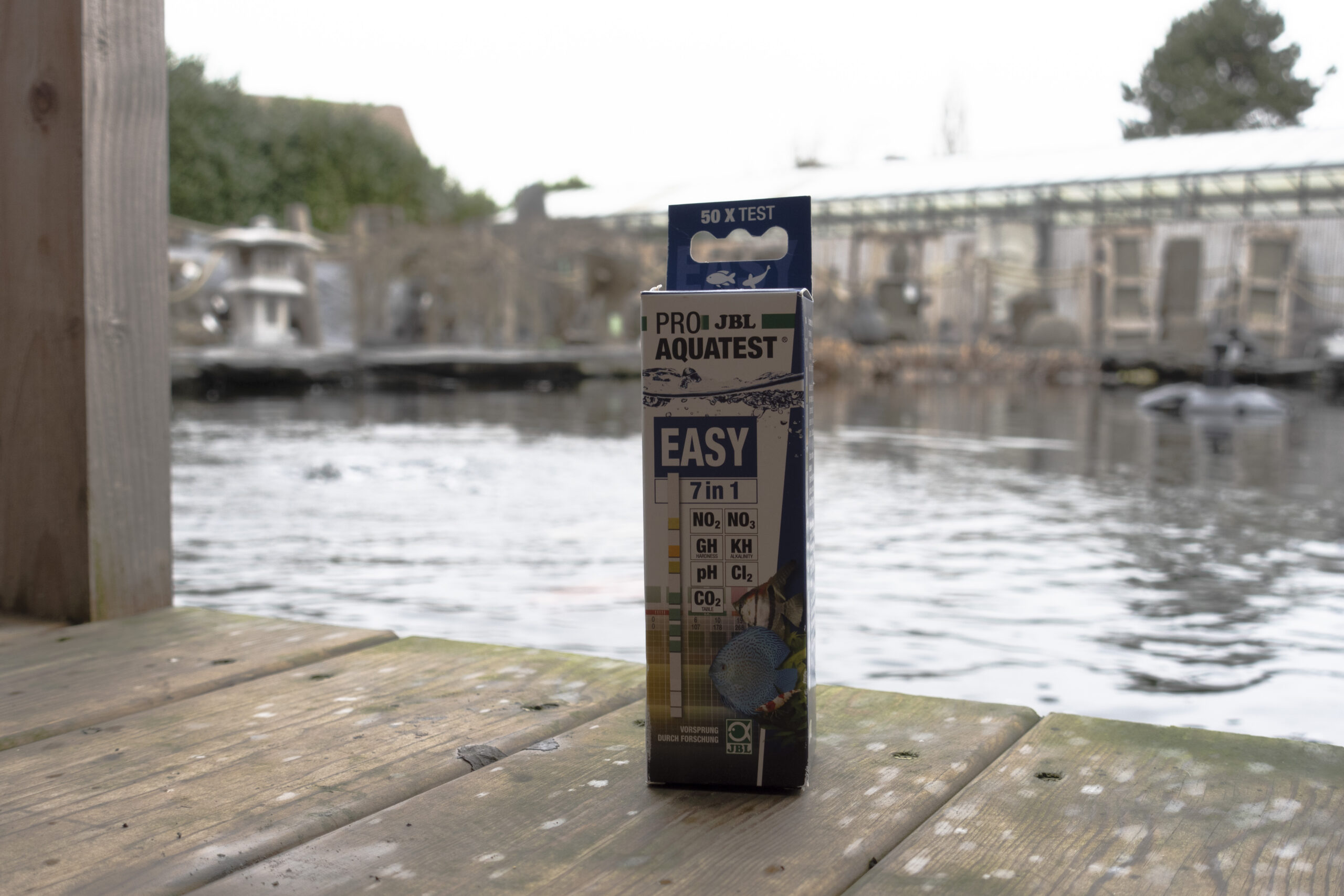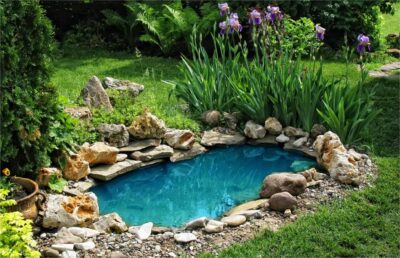Do you have a pond but don’t know how to properly use a pond water test kit to maintain your pond? The quality, affordability, and ease of use of quick nutrient testing kits are increasing. There are a number of possibilities with this technology: both enabling a greater understanding of pollution levels in the landscape and opening up access to simple water quality testing for everyone.
In spite of this, we haven’t found any quick kits that approach the accuracy of laboratory analysis. In order to ensure that their results are trustworthy, it is important to understand their strengths and limitations.
Testing your pond water
As part of your pond’s maintenance routine, you should test the water regularly. The water quality of the pond has a major impact on the health of the fish and will cause many pond problems. There are a variety of water quality problems that can pose a threat to fish health.
You should regularly check Ammonia, Nitrite, Nitrate, and pH, all of which are naturally occurring in your pond due to the Nitrogen Cycle. Understanding the pond environment is crucial for understanding these chemicals and their fluctuation.
By testing regularly, you can identify any abnormalities in your pond that can lead to an unhealthy environment and disease outbreaks. Pond owners can use results to prevent problems and find solutions for troubling changes in their ponds.

How to properly use a pond water test kit?
Water gardens routinely conduct over a dozen different tests to ensure their water is of the highest quality. Alkalinity, salinity, and some other tests can be quite confusing, determining what tests are essential is a bit difficult.
The majority of experts who deal with water quality agree on a few tests that every pond owner and professional should perform.
AMMONIA
The process of decomposition of organic substances (such as fish waste, leaves, grass, and dead fish) results in the formation of ammonia. The Ammonia released from this reaction contaminates the pond water. However, it is not always feasible to obtain a reading of Zero Ammonia.
NITRITE
Nitrite is the result of bacteria that break down ammonia into nitrite. As with Nitrite, your fish will get disturb by Nitrite, and the ideal value should be Zero.
NITRATE
The breakdown of Nitrite into Nitrate is further, resulting in a less toxic but still dangerous chemical for your pond fish. It would be ideal if the reading was zero. In addition to testing for Nitrite and Nitrate, some industry experts believe testing for Nitrite is sufficient.
Norm Meck, former president of the San Diego Koi club and 20-year member, believes it is crucial to test for nitrite because of its toxicity and danger to the fish. Fish ponds have low levels of nitrate when they are treated for nitrite, so nitrate is less toxic.
pH
Numerous experts believe it is important to test the pH level of your pond. The ideal pH for your pond varies from day to day but is mostly between 7.0 and 7.5.
In the morning, pH will be lowest, and in the evening, it will be highest, according to Freddie Combas, owner of Florida Water Gardens. It is possible to notice a huge difference in pH readings if you test your pond early in the morning and again in the evening. An average reading should be determined and not be alarmed by a large swing in the readings during the day.
KH
A pond’s carbonate hardness is its total alkalinity, a process whereby it maintains the pH level in its system. Carbonate Hardness is a measure of how stable the pH is. KH should be at least 100 parts per million, suggests Dave Jones, owner of The Pond Professional in Woodstock, Georgia. KH readings should be between 100 and 200 PPM.
PHOSPHATES
It is usually fish waste that introduces phosphorus into a pond, which serves as a nutrient that algae require to flourish. Because algae, like other plants, requires many nutrients to grow, a phosphates problem is not necessarily imminent just because the presence of phosphorus is detected. Ideally, there should be zero PPM in your pond, however, many ponds may have higher concentrations without any algae problems.

How do you test fish pond water?
Each test kit uses a chemical reaction to produce a color change in the sample pond water after the reagent reacts with it. This allows the user to obtain an accurate reading by comparing the results to known parameters. There are three types of test kits for ponds and water gardens.
1. Photometers – These handy devices can be expensive but are highly accurate. The readings of some meters are very fast and they can also be used for different tests. With the constant advancement in technology, meters are constantly being improved, but some experts believe they should be recalibrated regularly.
2. Water testing kits – A pond owner collects water samples using small vials. Injecting liquid reagents into the samples causes water to turn colored shortly after they are injected. A comparison of the color with the included charts provides an accurate reading of the water sample. The liquid kits are extremely accurate because they provide a number of points of reference when the color samples fall within a shade range.
3. Dry test strips – Test strips are convenient and quick. Just like the liquid kits, the strip is dipped in pond water with the reagents already applied and a short time later, a color shift is observed, which is compared with the provided charts. Using test strips is less messy, they’re easy to use, and are often tested for more than one parameter simultaneously. The charts are a great way to see whether the readings have increased or decreased.

Testing your pond water using a pond test kit?
The dissolved substances in water determine their quality. Besides calcium and magnesium, primary nutrients like phosphates and nitrates may play a role here as well as substances that form hardness. Additionally, the water contains both important gases, such as oxygen and carbon dioxide, as well as poisonous methane gases. Among many other substances, these and many others determine the quality of pond water.
In order to find out what your pond’s water value is, you must test the water. Having a pond with the correct water values is critical to achieving a beautiful, clear, and biologically balanced pond.
Using a water test kit, you can determine many of the substances dissolved in pond water. This type of kit is easy to use. The pH-, GH-, and CH-values are among the most important water tests listed in this publication. We recommend that you test your ponds regularly.










